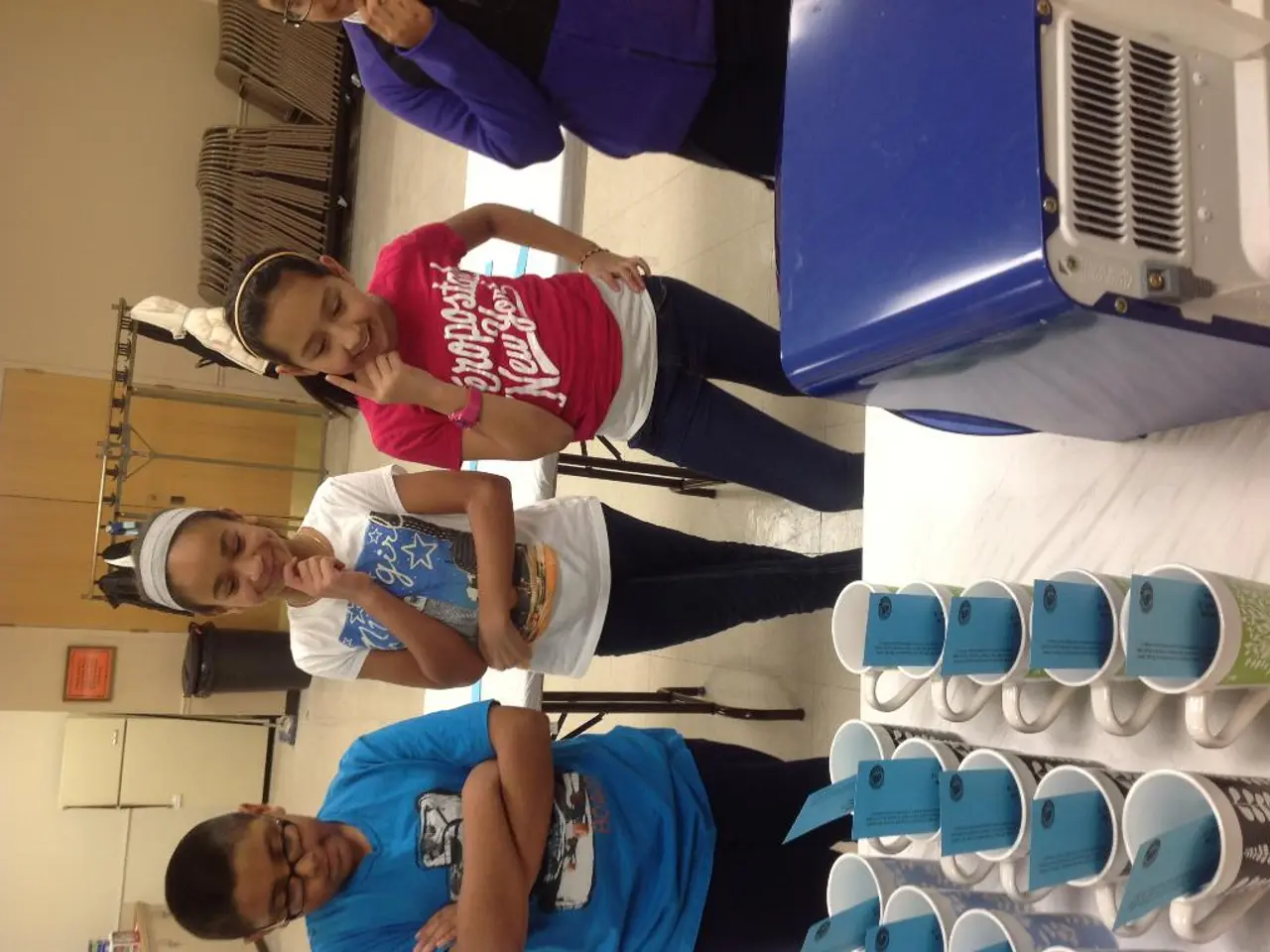Resourceful Strategies for Artfully Arranging Homeschool Materials that Favor Organic Learning Experiences
Homeschooling can be a rewarding experience, but managing supplies and keeping a tidy learning space can sometimes be challenging. Here are practical strategies to implement creative storage solutions that maximize productivity and reduce daily stress.
Mobility, Modularity, and Visibility: The Keys to Success
To streamline access and reduce time spent searching or tidying supplies, focus on mobility, modularity, and visibility. A rolling storage cart creates a mobile command center that follows your family's learning flow, transforming scattered supplies into an organized, accessible system.
Pair the rolling cart with a tabletop supply caddy or desk organizer that has removable cups or compartments. This allows kids to take just what they need without spreading clutter or losing items like crayons and pencils.
Customized Storage Solutions
Build a simple supply organizer using a lazy Susan (turntable) with mason jars or handled totes to keep frequently used items accessible and compact. Choose a rolling cart with metal surfaces so you can add magnetic hooks or clip-on cups for customizing storage of art supplies, flashcards, manipulatives, and daily subject bins.
Consider using labeled storage cabinets or bins to separate categories like books, papers, craft materials, and manipulatives. Locking bins can secure small or messy items like beads or glitter and help with quick cleanup.
Portable Learning Caddies
Math caddies are packed with calculators, rulers, manipulatives, and scratch paper. Science containers include magnifying glasses, measuring tools, small notebooks, and collection bags. Language arts caddies have dictionaries, thesauruses, colored pencils, and story prompts. These portable learning caddies should include essential tools for each academic area.
Organizing by Subject
Create separate containers for math, science, and language arts to prevent supply mixing. Using plastic bins with secure lids ensures that each subject's supplies stay organized and easy to find.
Color-Coding System
A color-coding system is suggested for homeschool supplies, with each child or subject assigned a distinct color. Containers and labels should match the assigned colors for visual consistency.
Repurposing Old Furniture
Old furniture can be repurposed for homeschool storage, such as dressers, bookcases, and storage ottomans.
Dedicated Learning Zones
Establishing dedicated zones throughout your home helps children develop automatic habits and maintain focus across various subjects. Reading corners become more inviting when books stay organized and accessible. Art supplies need immediate access but contained mess control for successful creative sessions. Science experiments require quick setup and safe storage for ongoing investigations.
Wall-Mounted Storage Display
A wall-mounted storage display maximizes vertical storage space while keeping supplies accessible, freeing up desk space and allowing children to grab materials without disrupting others.
Reading Nooks and Art Stations
Reading nooks should have floating shelves, fabric bins, floor cushions, a side table, and a reading lamp. Art stations should have a spice rack, lazy Susan, paper roll dispenser, and magnetic strips. Science areas should have a dedicated cabinet with clear plastic drawers and a pegboard for tools.
Mason Jars for Small Items
Mason jars provide excellent visibility and containment for small items, making them perfect for creating subject-specific storage solutions.
By implementing these strategies, you can transform your homeschool chaos into a streamlined learning environment, reducing stress and increasing learning momentum.
Incorporate 'lifestyle' by planning a homeschool layout that caters to the daily needs of your family, effectively blending 'home-and-garden' elements with 'education-and-self-development'. For instance, utilize wall-mounted storage displays and repurpose old furniture for practical and aesthetically pleasing homeschool spaces.
Deploy 'learning' techniques such as organizing by subject using plastic bins, creating portable learning caddies for each academic area, and implementing a color-coding system for easy identification of supplies. This not only strengthens organization but also fosters productivity and focus in the homeschool setup.




